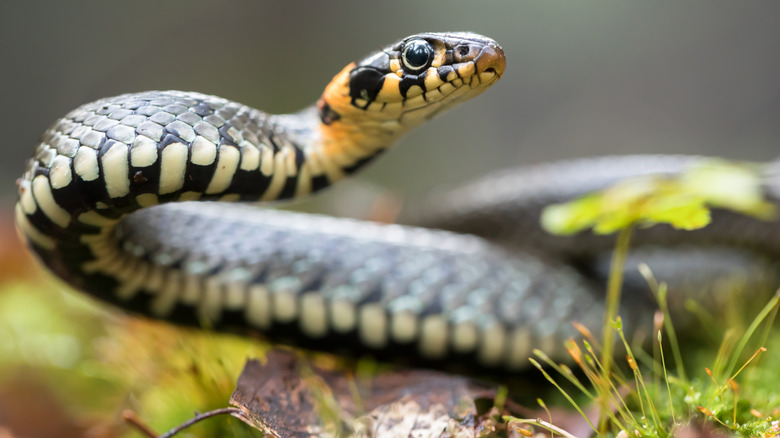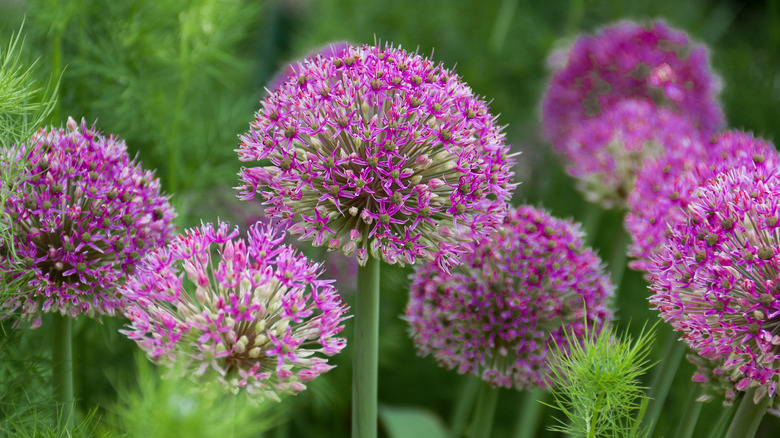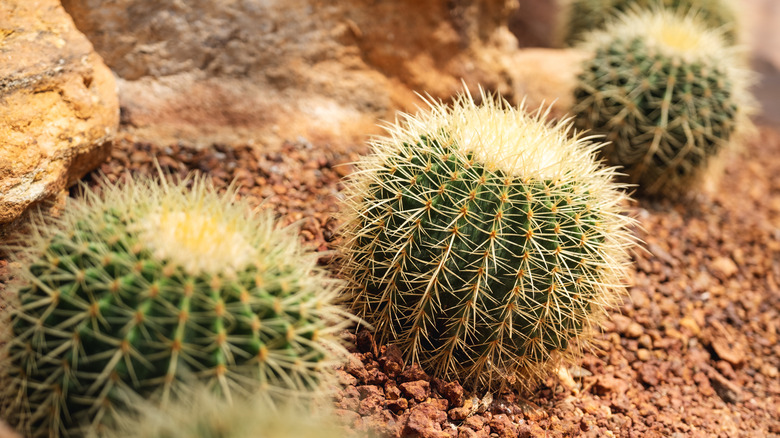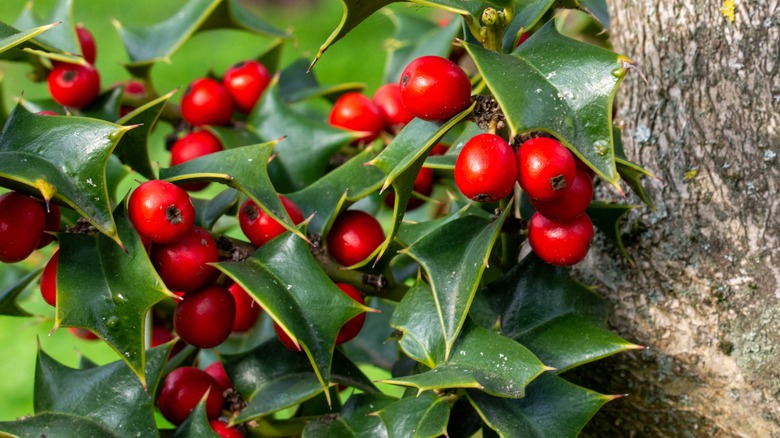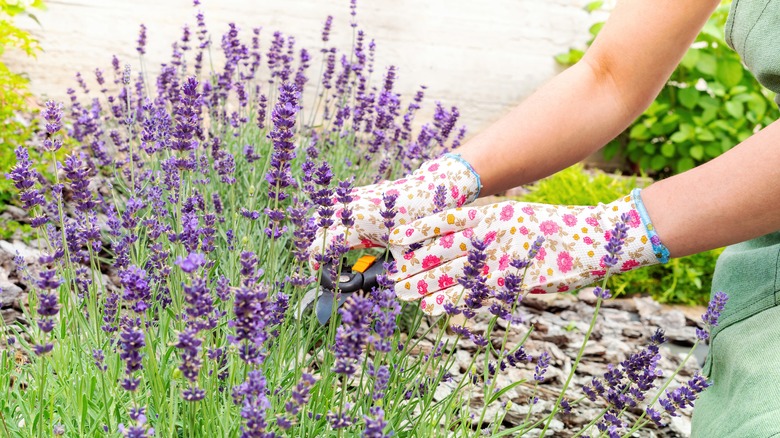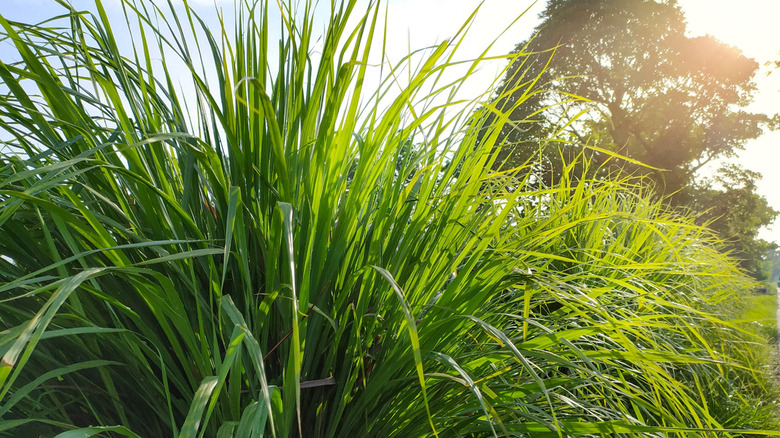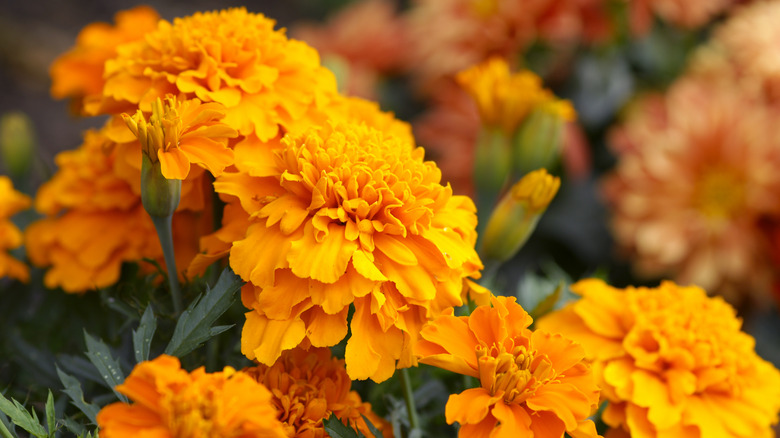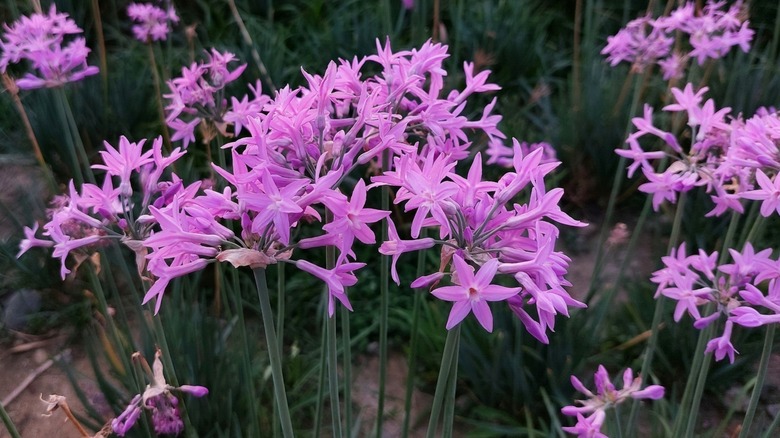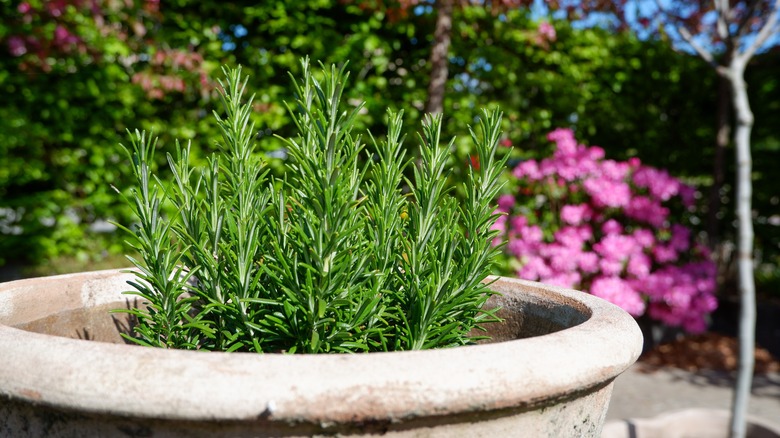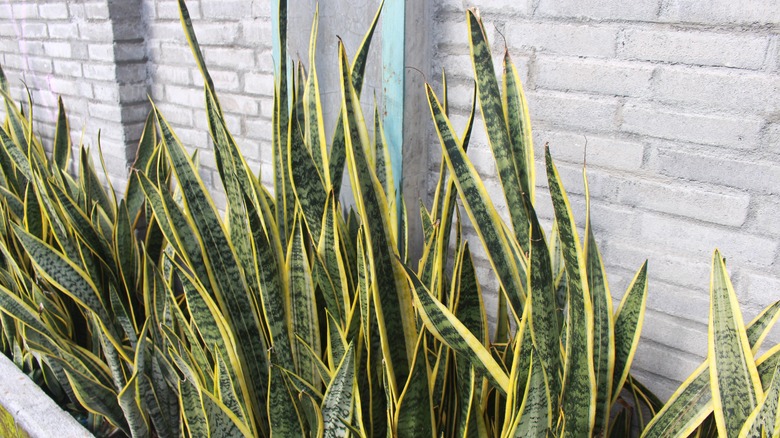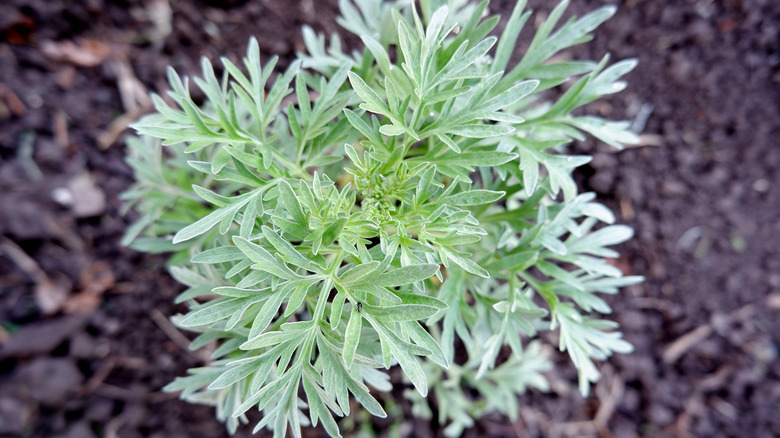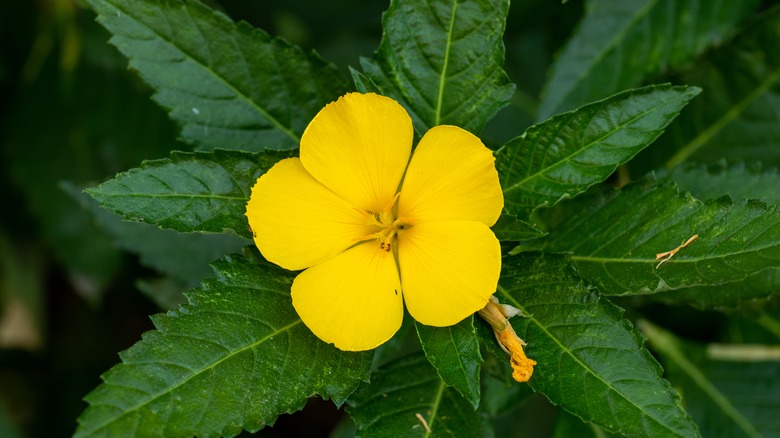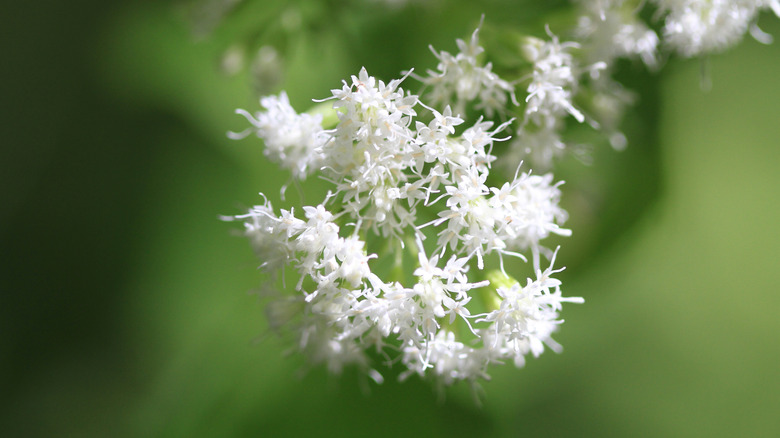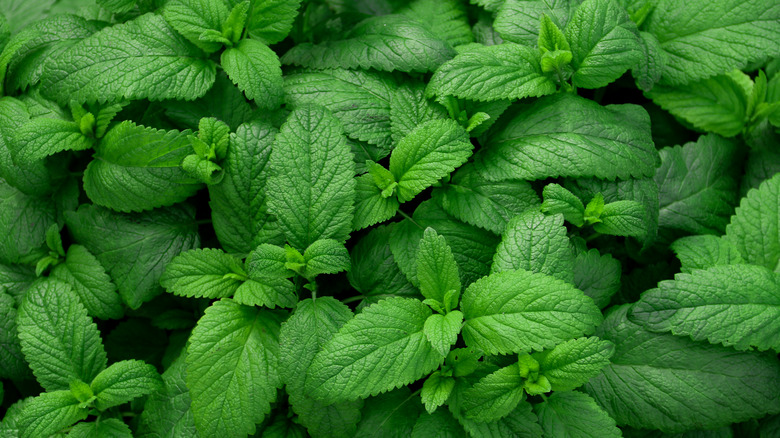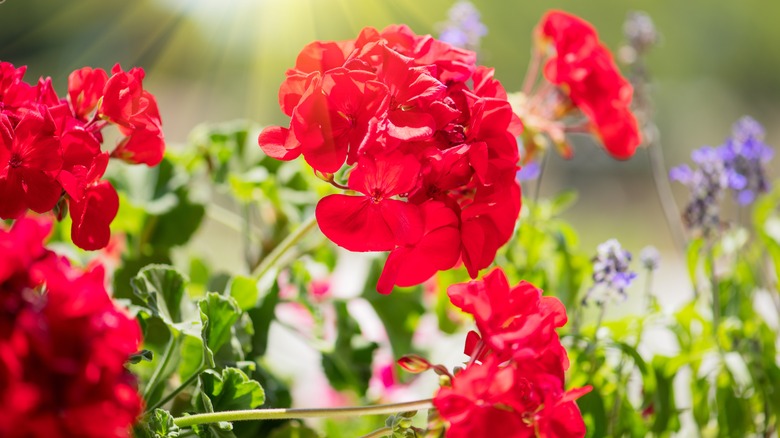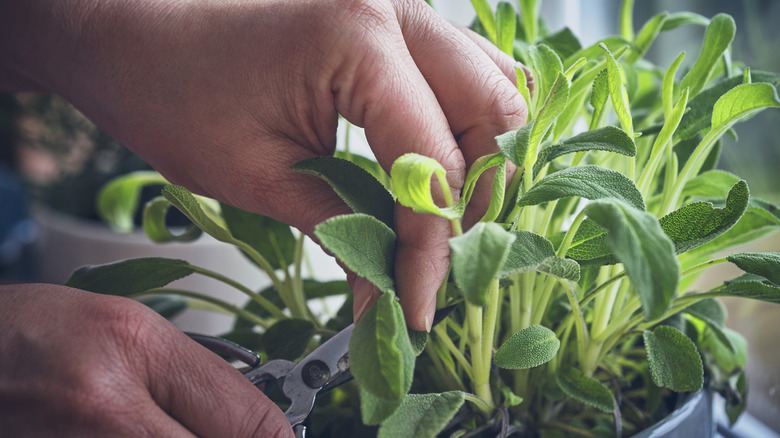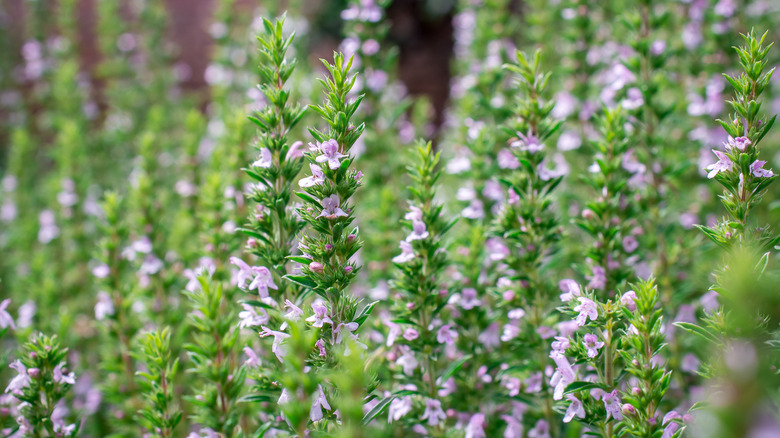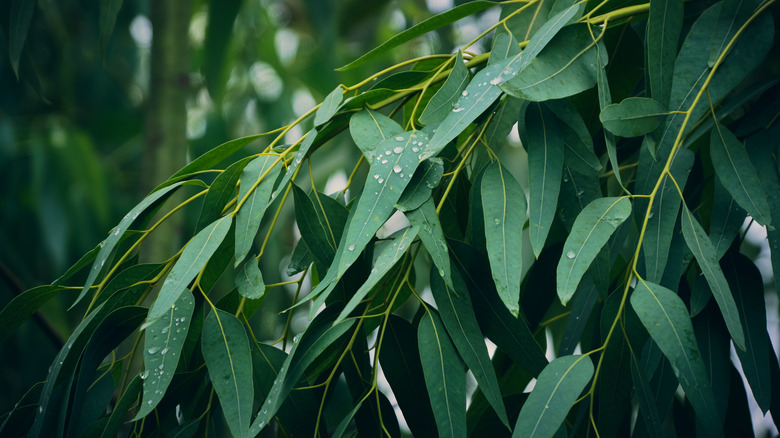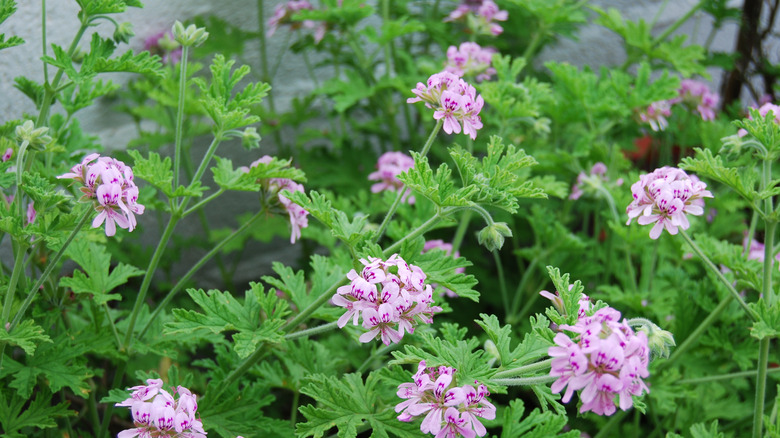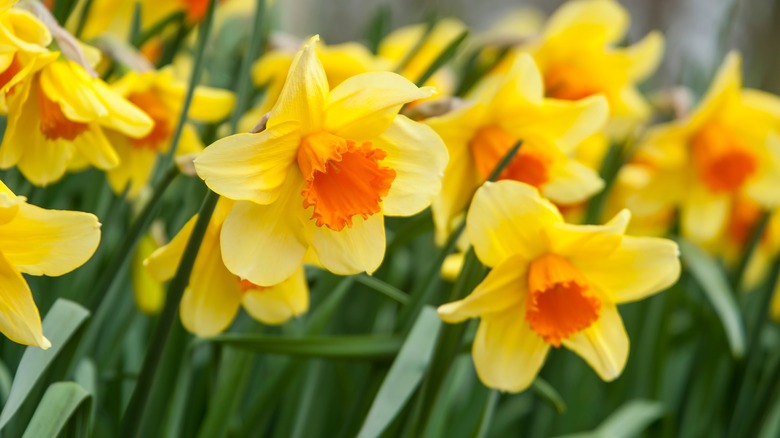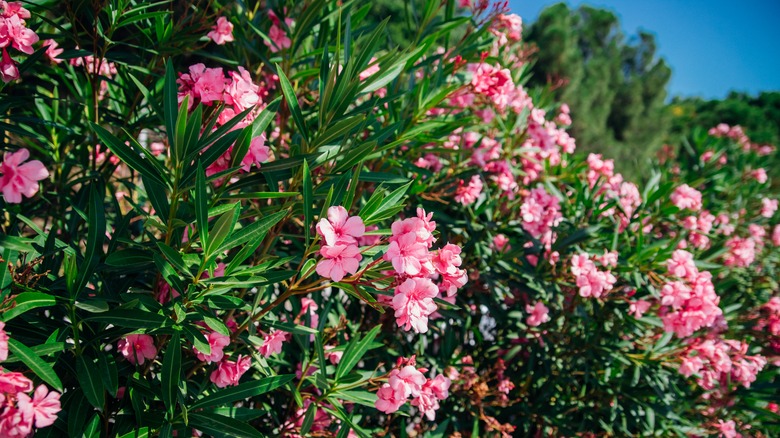20 Beautiful Plants That Double As Natural Snake-Repellents
Many different kinds of snakes may be attracted to your yard because of its cool environment, long grass, or food sources like rodents and mice. While most snakes will not harm you, if you're not a fan of the slithering creatures, then you might want to find handy ways to keep snakes out of your garden. Although there is a range of ways to deter the serpents, planting the right flowers and greenery can be an effective and eco-friendly way to rid your property of these pests.
Many plants give off scents that we find appealing. However, snakes find them rather off-putting, which prompts them to avoid any area where the plants are found. Certain greenery can also release chemicals that annoy snakes and may even be toxic, while others have spiky surfaces that the creatures are not fond of slithering over. At the same time, many of these plants are stunning and make gorgeous additions to any yard. Indeed, if you have a snake issue around your home, then you can choose to add one (or more!) of the following 20 beautiful plants that double as natural snake repellents around your property.
1. Allium (Allium spp.)
When allium grows tall in your garden, you'll find that it produces stunning purple flowers that form balls at the top of each stem. At the same time, allium happens to be part of the onion family, which means that the plants contain sulfonic acid, the reason why cutting onions makes us cry. Snakes simply don't like this chemical, as well as the strong scent of the plant. Thriving in USDA growing zones 3 to 9, you can use these plants to create a border around your yard. However, alliums are poisonous to pets per the Pet Poison Helpline, so be cautious.
2. Golden barrel cactus (Echinocactus grusonii)
If you can't pick up a potent scent from a golden barrel cactus, then you're not alone. In fact, it's not a strong smell that helps this plant deter snakes. Instead, it's their potentially-painful spikes that keep the slithery creatures away, not to mention any other pests that don't want to be poked. An ideal addition to properties in USDA zones 7 to 11, this sun-loving plant can grow to be up to 4 feet tall and 2½ feet wide, which makes it both eye-catching to humans and hard for snakes to avoid.
3. Holly (Ilex aquifolium)
Although there are different kinds of holly, most are hardy in zones 3 to 10, which means that there's likely a type that will suit your area. Along with adding a touch of green to your yard with its gorgeous leaves and dots of red thanks to its berries, these plants grow as shrubs that are relatively low to the ground. This means that snakes that try to pass by them can be pricked by the pointy leaves – which is something they would rather avoid. Keep in mind that, according to the Pet Poison Helpline, holly can be poisonous for pets.
4. Lavender (Lavandula angustifolia)
If you grow lavender around your home, you'll surely love the look of the purple plants, not to mention the captivating scent that is just as beloved as the appearance. Despite the popularity of lavender's aroma with humans, it's believed that snakes dislike the scent and do their best to stay away from it. It also contains linalool, a toxic substance that may deter snakes but that's also toxic for pets, per the ASPCA. If you choose to plant lavender to deter snakes, most varieties do well in zones 5 to 9.
5. Lemongrass (Cymbopogon citratus)
There's no doubt that lemongrass looks as good as it sounds (and, of course, tastes) thanks to its tall leaves that grow in a beautiful bushy bunch. An ornamental grass that grows well in USDA zones 9 to 11, it produces a pleasant aroma that (unsurprisingly due to the name) has hints of a citrus scent. This smell, which comes from the presence of limonene in the plant, is what deters snakes. Plant with caution, as the ASPCA says that lemongrass is poisonous for pets.
6. Marigolds (Tagetes spp.)
When marigolds bloom, they produce plump orange, red, and yellow flowers that will bring a lovely pop of color to your property. They also attract pollinators like butterflies, which is certainly another bonus. What they won't bring to your yard is snakes. Growing in zones 2 to 11, they develop deep roots that give off alpha-terthienyl, a toxin that keeps them away. The flowers are also known to give off a scent that the slithering creatures dislike. This means that the flower could not only repel snakes slithering on the surface but also those that might be found in the soil beneath your grass.
7. Pink agapanthus (Tulbaghia violacea)
Another plant that's included in the onion family, pink agapanthus' are just as pretty as alliums but produce light blush-colored flowers instead of purple ones. Plant the two together for a gorgeous arrangement that offers you double the snake-repelling power. Thanks to the fact that pink agapanthus gives off a similar oniony scent and contains sulfonic acid, it's incredibly off-putting to snakes. Be sure to grow pink agapanthus in zones 7 to 10 and in a spot that doesn't get too wet to avoid bulb rot. Because this is another member of the allium family, the Pet Poison Helpline says that it's toxic for pets.
8. Rosemary (Salvia rosmarinus)
You might think of rosemary as an herb that can add flavor to your meals, which is why you may want to grow it in your herb garden if you live in zones 7 to 10. At the same time, the gorgeous plant has an enticing scent that isn't so appealing for snakes, which is another reason to plant it around your yard. You can also harvest your rosemary and dry it out before placing some of the pieces — which smell as potent as the fresh plant — around your yard to help keep snakes away. Rosemary oil could also be used in the same way.
9. Snake plant (Dracaena trifasciata)
Despite the fact that it's named the snake plant, the creatures that have the same moniker aren't actually fond of this option. In fact, the name surely has more to do with the fact that they're a long plant that grows stunning leaves with an arguably snake-like appearance. It could very well be this look that scares snakes away, or it could be the fact that the leaves can be rather sharp. Ideally grown in zones 10 to 12, this is a plant that likes warmer temperatures and dryer soil. Keep in mind that the ASPCA says this plant is toxic for cats and dogs.
10. Wormwood (Artemisia vulgaris)
Growing best in zones 4 to 8, wormwood may have a questionable name, but it also boasts a gorgeous appearance. Producing leaves that have a silvery hue and look more delicate than they are, this plant also gives off a fragrance that snakes find repulsive. If you keep your wormwood happy and healthy, it can grow to be 2 feet high as well as 3 feet wide. That makes it an ideal choice for planting as a border around your space to keep snakes from coming near, but this plant is invasive. Wag! says that this plant is also toxic for dogs, so beware.
11. Yellow alder (Turnera ulmifolia)
Yellow alder gives you a hint of what it offers in its name. Blooming yellow flowers alongside its deep green leaves and stems, this is a plant that grows low to the ground and tends to spread when it's given an ideal spot. Doing well in zones 9 to 11, it can make its way across your yard, which is a fabulous thing if you want to keep snakes away. The creatures don't like to have to pass through these blooms and are believed to dislike the scent. Homegrown landscapes says that this plant can be toxic, so be cautious with pets and children.
12. White snakeroot (Ageratina altissima)
Although it has a name that is similar to a snake plant, the white snakeroot plant is different. Of course, it's just as lovely in its own way. Able to grow 5 feet high when given the right damp, cool, and somewhat shady conditions, it grows luscious green leaves along with puffy white flowers. Thriving in zones 3 to 8, it contains many toxins that are dangerous for all animals, including snakes. While this will help to keep the serpents at bay, you'll want to be sure your pets stay away from it as well, per the ASPCA.
13. Mint (Mentha)
Another adorable plant that will add gorgeous greenery to your yard, you're surely aware of the fact that mint tastes amazing and smells just as good. Granted, that's our opinion and one that snakes do not share. In fact, they hate the smell of this plant, and it's also believed that the strong scent of especially peppermint makes it more difficult for these creatures to hunt and navigate their surroundings. Be sure to note that mint does best in USDA zones 3 to 8, which is unfortunate for snakes but may be great for you. The ASPCA names mint as toxic for pets, so keep this in mind.
14. Geraniums (Pelargonium X hortorum)
Geraniums are another option that will add a vibrant touch to your yard while also warding off snakes. While you get to delight in the colorful flowers and the fabulous fragrance that they release, snakes will pick up the smell and head in the other direction. Found in USDA zones 3 to 9, they will grow in a range of conditions, making them a relatively easy addition to care for. There are also perennial varieties, which ensures that they'll keep snakes away year after year. Because this plant is toxic for animals per the ASPCA, be cautious when planting.
15. Sage (Salvia officinalis)
If you want to keep snakes far away from your home and also live in USDA hardiness zones 4 to 10, you can add sage to the list of plants you want to grow in your yard. This plant is believed to repel snakes because of its strong scent, which the slithering creatures dislike. Pop it into your garden, in specific spots around your property, or in planters and enjoy the fuzzy green leaves that are as cute as they sound. Harvest when it's ready and use some in your cooking before drying out the rest and sprinkling it around your home as a further snake deterrent.
16. Thyme (Thymus vulgaris)
If you live in USDA zones 5 to 9, then thyme will likely grow well on your property during the hotter months. It will also look incredible in your yard while thriving throughout the year in warmer areas. As it grows, it will let off a pleasant scent that will attract pollinators like butterflies but also repel snakes at the same time. Because it's one of the main ingredients in some commercial snake repellents, the scent is believed to work at keeping serpents away from properties.
17. Eucalyptus (Eucalyptus sp.)
It's hard to imagine not loving eucalyptus leaves, since they're a wonderful green color that has a hint of blue and a slightly-silvery sheen when dried. Originally from Australia but able to grow in USDA zones 8 to 11, this plant grows quickly and produces a smell that will fill your yard. Indeed, it's effective at keeping snakes away due to the fact that the animals don't appreciate the fragrance. Also note that this plant can be toxic to humans and pets per the ASPCA, so it's best to admire it from a safe distance.
18. Citronella (Pelargonium citrosum)
You might already have citronella around your exterior space to keep nasty mosquitos out of your yard. If so, you'll be happy to find out that its lemony smell and the presence of limonene in the plant repels snakes as well. A perennial that loves to be planted in zones 9 to 11, this plant is also known as a lemon geranium, thanks to both the citrusy fragrance and the fact that it has almost flowery leaves and sometimes produces little pink flowers. be cautious when planting, as the Animal Humane Society says that it's toxic for pets.
19. Daffodils (Narcissus pseudonarcissus)
Plant daffodil bulbs in the fall and by spring, you'll be benefitting from not only the flower's gorgeous appearance but also their power to repel snakes from your outdoor space. An ideal choice to plant as a vibrant and charming yellow addition to a border, they prefer to be planted in USDA zones 3 to 9. They're believed to keep slithering creatures away because every part of the plant contains lycorine, which is toxic for animals. Because of this, also keep your pets away from these blooms — the ASPCA says that the bulbs are especially poisonous.
20. Oleander (Nerium oleander)
If you live in hardiness zones 8 to 10, then you might have spotted oleander growing in your neighbor's yards. What you might not have seen in their outdoor spaces are snakes, since oleander can be used to deter these creatures. Growing in a bountiful bush, each plant will produce thin green leaves and lovely pink flowers. However, don't let the gorgeous look fool you, as this plant is toxic for both humans and animals alike — which may be why snakes steer clear of it. Because of this, also be careful with your pets around this plant, per the ASPCA.
